 We all know John Wilkes Booth, the assassin of President Abraham Lincoln. And then there was Edwin Booth, the great Shakespearean actor known for his performances of Hamlet. But there was another Booth brother in the acting business, and you won’t believe where he showed up in this edition of Unexpected Lincoln.
We all know John Wilkes Booth, the assassin of President Abraham Lincoln. And then there was Edwin Booth, the great Shakespearean actor known for his performances of Hamlet. But there was another Booth brother in the acting business, and you won’t believe where he showed up in this edition of Unexpected Lincoln.
Junius Brutus Booth, Jr. was the eldest son and namesake of the great British/American actor (not surprisingly named Junius Brutus Booth, Sr.). The Senior Junius Booth was considered one of the greatest actors of his time, that is, when he wasn’t having mental health and drinking issues. After abandoning his wife and son in England, Junius Senior absconded to the United States with Mary Ann Holmes, a flower girl he has just met. They had twelve children together, most notably the three actor brothers and their sister Asia. Junius Junior was the least known of the three, an okay actor that never reached the fame (and infamy) of his two younger siblings. Only once did the three brothers perform together on stage, in Julius Caesar (ironically, or perhaps presciently, Caesar and Brutus entered into John Wilkes’s thought processes when contemplating the assassination of Lincoln).
Booth, Jr., like all of the Booth actors, had an erratic life, including three marriages. The first was brief, the second died giving birth to their only child (who somehow lived a long life, dying at age 78 in 1937). Booth, Jr. was out in California for much of the Civil War, returning east in 1867 to become manager of the Boston Theatre, and married an Australian-born widow, Marion Agnes (Rookes) Perry, who was also an actress and dancer thereafter known as Agnes Booth.
Here’s where the unexpected comes in.
While managing the Boston Theatre (in, obviously, Boston, Massachusetts), Booth Jr. started a hotel and summer theater operation in Manchester-by-the-Sea, a Massachusetts seacoast town on Cape Ann north of Boston. [BTW, there was a critically acclaimed film of the same name starring Casey Affleck in 2016 that is definitely worth seeing]. I’m quite familiar with Manchester-by-the-Sea as it’s close to my hometown and my grandmother lived there for 102 years. I was completely unaware, however, that the aforementioned Junius Brutus Booth, Jr. had a hotel and summer stock theater there and, in fact, is buried in the cemetery I had passed hundreds of times.
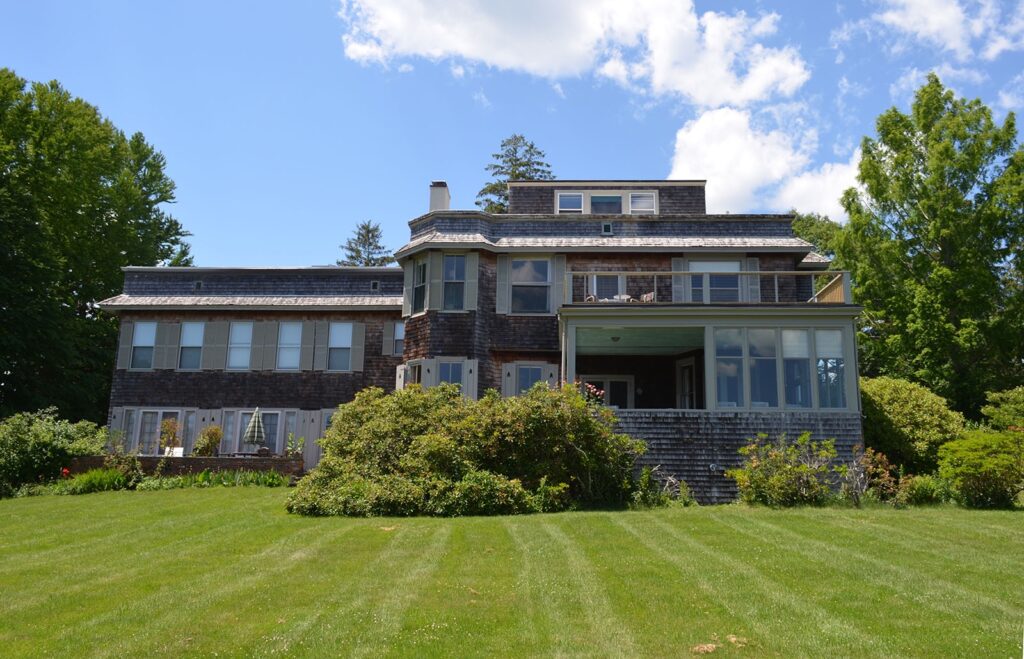
Having recently discovered this fact, I made a beeline for Manchester on my recent road trip to New England. And there it was. First, the hotel. On the narrow road just before the famous Singing Beach was an old house (above) that I had barely noticed on my many walking trips down that road. The main house is where Junius and Agnes lived while they let out rooms in the hotel extension next door. Most of the hotel portion burned down early in the 20th century, but a small part of it remains as the residence of the current owners, who now make the main house (the original that survived the fire) available for rental at a hefty price per night. It’s a short walk to the beach. This is the house that Booth built.
After finding the house (which, to be honest, could use some landscaping work), I drove up the road to the Rosedale Cemetery. I had seen a photo of the gravestones on Find-a-Grave (an incredibly useful website for finding dead people) but it didn’t give a location in the cemetery. This was the third cemetery I visited on this particular road trip; the first two conveniently told me the exact location. This one didn’t but the photo seemed to show the graves near a granite wall, so I circled the cemetery perimeter looking for a granite edge. Almost giving up (the cemetery is mostly ringed by a wrought iron fence), I suddenly noticed the unique shape of Junius, Jr.’s tombstone. Quickly pulling over into a miraculously available parking spot, I confirmed that this was the correct spot. In this section, the wrought iron fence sat atop a short granite wall base.
Junius Booth’s gravestone is literally an open book, which is how I was able to locate it so quickly. The book appears open to its middle pages and sits on a short pedestal such that the top is maybe three feet off the ground. The inscription is worn with age but still legible if you look closely. Oddly, it says he died in September 1884 while all the other information says he died in 1883 at age 61. Next to him is the scroll-like gravestone of his last wife, Marion Agnes Schoeffel. Yes, that’s Agnes Booth. Even though she remarried to a man named John B. Schoeffel, Agnes chose to be buried next to her more famous second husband and three of their children. The next Junius in line, their son Junius Brutus Booth III, died by suicide in 1912 and is buried in Brightlingsea, Essex, England.
Like his brother Edwin, Junius Jr. had been hauled into Old Capitol Prison in Washington, DC after their more infamous brother John Wilkes had assassinated Abraham Lincoln. Both Edwin and Junius Jr. were interrogated and released, and both went on to continuing careers in the theater after short hiatuses. By the way, Edwin had an encounter with another Lincoln, having famously saved the life of Robert Lincoln at a train station in late 1864 or early 1865. See more about that incident here. Junius ended up in New England, and the rest, as they say, is history.
Unexpected Lincoln is on the trail of other little-known connections to Lincoln, including more from my New England road trip that I’ll relate soon.
Photo credits: Top = Junius Brutus Booth Jr. by Mathew Brady, Library of Congress Prints and Photographs Division; Second from Top: Masconomo House, Manchester, MA from rental listing; Grouping = Booth gravestones, Rosedale Cemetery, Manchester, MA by David J. Kent

Lincoln: The Fire of Genius: How Abraham Lincoln’s Commitment to Science and Technology Helped Modernize America is available at booksellers nationwide.
Limited signed copies are available via this website. The book also listed on Goodreads, the database where I keep track of my reading. Click on the “Want to Read” button to put it on your reading list. Please leave a review on Goodreads and Amazon if you like the book.
You also follow my author page on Facebook.
David J. Kent is President of the Lincoln Group of DC and the author of Lincoln: The Fire of Genius: How Abraham Lincoln’s Commitment to Science and Technology Helped Modernize America and Lincoln: The Man Who Saved America.
His previous books include Tesla: The Wizard of Electricity and Edison: The Inventor of the Modern World and two specialty e-books: Nikola Tesla: Renewable Energy Ahead of Its Time and Abraham Lincoln and Nikola Tesla: Connected by Fate.







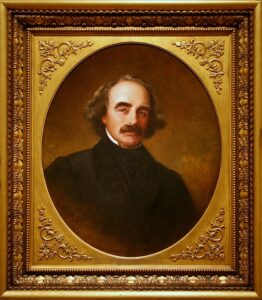 On March 13, 1862, Nathaniel Hawthorne, the great novelist, met Abraham Lincoln in the White House. He was not impressed.
On March 13, 1862, Nathaniel Hawthorne, the great novelist, met Abraham Lincoln in the White House. He was not impressed. With Leap Year Day, February graced the nation with an extra twenty-four hours on February 29, 1860. Abraham Lincoln was already feeling weary by the time he clambered onto the 10:40 am train from Providence, Rhode Island, to Exeter, New Hampshire. It was nearly two in the morning the day before by the time he finished his grand lecture at Cooper Union in New York City, joined the organizers for dinner, and spent several hours after midnight proofreading the text of the speech to be printed that day in the New York Tribune. A brief forty winks of sleep, then up again and on a train to Providence to give yet another long lecture that night. Having that speech gone well, and another late dinner, now he was on another train to finally see his son, Robert, in Exeter, the original rationale for this excursion into New England after New York.
With Leap Year Day, February graced the nation with an extra twenty-four hours on February 29, 1860. Abraham Lincoln was already feeling weary by the time he clambered onto the 10:40 am train from Providence, Rhode Island, to Exeter, New Hampshire. It was nearly two in the morning the day before by the time he finished his grand lecture at Cooper Union in New York City, joined the organizers for dinner, and spent several hours after midnight proofreading the text of the speech to be printed that day in the New York Tribune. A brief forty winks of sleep, then up again and on a train to Providence to give yet another long lecture that night. Having that speech gone well, and another late dinner, now he was on another train to finally see his son, Robert, in Exeter, the original rationale for this excursion into New England after New York.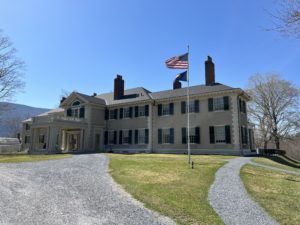 Mary Lincoln hated Washington, especially during the pestilent humidity of the capital city during the heat of summer. It’s the reason President Lincoln moved to the soldier’s home (now President Lincoln’s Cottage) each summer, beginning with 1862 after Willie’s death earlier that year. Mary would take Tad northward, often to New York and into New England, usually to be joined by Robert during his summer break from his studies at Harvard College. In 1863 they traveled to the White Mountains of New Hampshire, then in August of 1864 Robert met his mother and brother in the Green Mountains of Vermont. He intended to return with the president in the summer of 1865, but the assassination kept that from happening. Notwithstanding, the 1864 trip would capture Robert’s fancy enough to return decades later to build his own summer cottage known as Hildene.
Mary Lincoln hated Washington, especially during the pestilent humidity of the capital city during the heat of summer. It’s the reason President Lincoln moved to the soldier’s home (now President Lincoln’s Cottage) each summer, beginning with 1862 after Willie’s death earlier that year. Mary would take Tad northward, often to New York and into New England, usually to be joined by Robert during his summer break from his studies at Harvard College. In 1863 they traveled to the White Mountains of New Hampshire, then in August of 1864 Robert met his mother and brother in the Green Mountains of Vermont. He intended to return with the president in the summer of 1865, but the assassination kept that from happening. Notwithstanding, the 1864 trip would capture Robert’s fancy enough to return decades later to build his own summer cottage known as Hildene. Robert Lincoln got his initial interest in astronomy from his father. Abraham Lincoln was fascinated by astronomy, as I discuss in my book,
Robert Lincoln got his initial interest in astronomy from his father. Abraham Lincoln was fascinated by astronomy, as I discuss in my book, 
 Abraham Lincoln is the most memorialized president in American history, in terms of the number of monuments and statues in all fifty states and the U.S. territories. According to the
Abraham Lincoln is the most memorialized president in American history, in terms of the number of monuments and statues in all fifty states and the U.S. territories. According to the 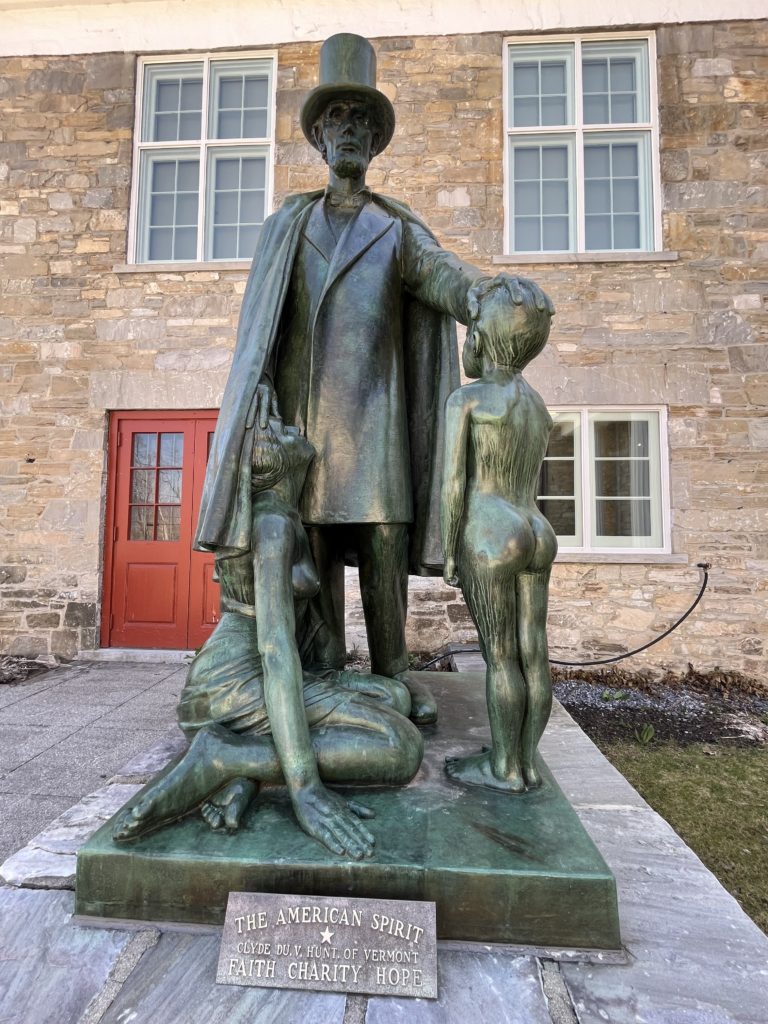
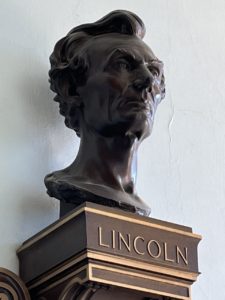 Abraham Lincoln famously had less than one year of formal schooling, but you can find him now at both Harvard and Yale.
Abraham Lincoln famously had less than one year of formal schooling, but you can find him now at both Harvard and Yale.



 Several days before my visit to Harvard I was on the Yale campus. Lincoln had given a speech in 1860 in Union Hall. The hall no longer stands (the High School in a Community is now in its place) but there is a memory of Lincoln on the green at Yale. There, at least up until recently, stood a majestic Oak deemed the “Lincoln Memorial Oak” that had stood for ages. In late 2012 the stately old tree was toppled by Superstorm Sandy,
Several days before my visit to Harvard I was on the Yale campus. Lincoln had given a speech in 1860 in Union Hall. The hall no longer stands (the High School in a Community is now in its place) but there is a memory of Lincoln on the green at Yale. There, at least up until recently, stood a majestic Oak deemed the “Lincoln Memorial Oak” that had stood for ages. In late 2012 the stately old tree was toppled by Superstorm Sandy, 






